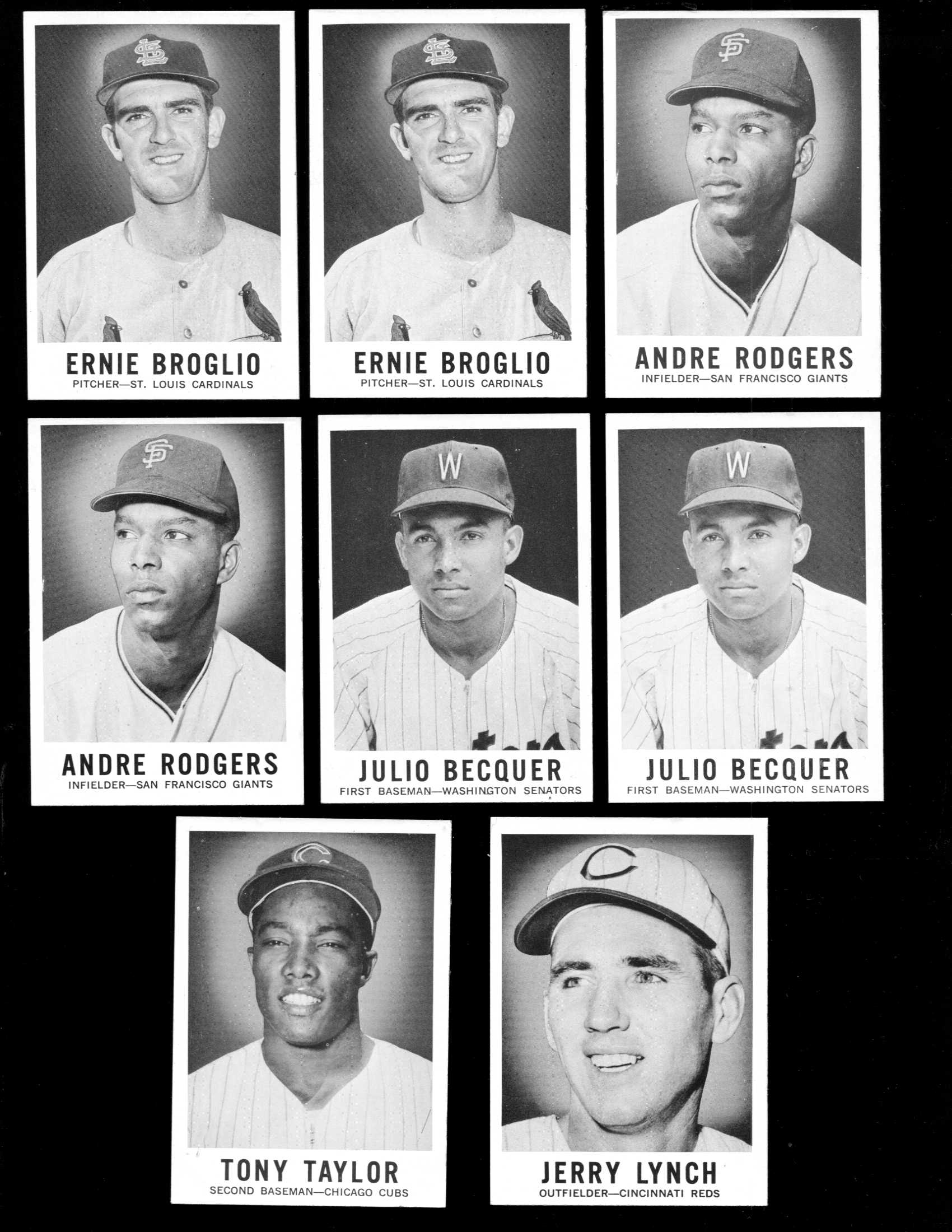Below are short bits & pieces on sportscard & baseball trading card collecting.
Please wander around the website for more info, prices, values & images
on vintage baseball, football, basketball, hockey, sport and non-sports cards.

1934,1935,1936 Diamond Matchbooks
During much of the Great Depression, matchbook collecting swept the country !
Sports matchbooks started appearing in the 1930s, most issued by Diamond Match Company
of New York. Over the next few years, several series were issued with
similar designs; b/w photo of the player on front with short write-up
and stats on back. The player's name and team was also printed on the 'saddle'.
Please consider the following info as approximate.
1934's first baseball release featured 200 players, in 4 different background
colors (red,blue,green and orange) for a total of 800 different covers.
The set features plenty of Hall-of-Fame greats like Dizzy Dean and Mel Ott.
1935's issue was tiny with only 24 total covers (8 red,8 blue,8 green).
A third series was later released with 200 or more different covers (players/colors).
1930's matchbook covers appear to be huge bargains for collectors as their current values
are fractions of the value of Goudey and other baseball cards from the same era.
Click for complete
1935-1936 Diamond Matchbook Checklist and Prices
Note: You may be on that page right now.
|

Autographed Gateway Cachets
Gateway Stamp Company has provided collectors well over 1 MILLION
authenticated certified autographs over the last 30 years.
Silk Cachets from Gateway Stamp Company
Even though a "stamp company", Gateway rarely dealt in stamps, going down
a new and creative road becoming one of the world's most unique secrets in
autograph collecting combining the best in art, color photographs, history
and autographs with their full-color silk cachet envelopes. Gateway's first
client was Cardinals Hall of Famer Lou Brock with hundreds to follow.
WHAT ARE FULL-COLOR SILK CACHETS?
A "cachet" is a message or design on an envelope marking a postal event.
"Full-color silk" refers to the delicate material into which the
original art and photography are printed. After which each silk is applied
to the envelope, signed by the player and then officially post-marked by the
U.S. Post Office IN THE CITY OF THE EVENT !!!
WHY POSTMARKS?
The key to EVERY Gateway cachet is the postmark.The best way to mark a date
in history is with a postmark. The rules governing the granting of
postmarks GUARANTEE that NO Gateway issue can EVER be re-issued protecting
the value of the autographed, postmarked cachets !!!
|

1969 CITGO Coins
 In 1969, to commemorate Baseball's 100th Anniversary, CITGO released their
"Famous Baseball Player Coin Collection" of 20 brass coated metal coins.
On the front, the coins featured the player's name and a raised image of
his head. The back displayed a banner honoring baseball's s 100th Anniversary.
The coins are approx. 1" in diameter and are very susceptible to
tarnishing due to oxidation.
In 1969, to commemorate Baseball's 100th Anniversary, CITGO released their
"Famous Baseball Player Coin Collection" of 20 brass coated metal coins.
On the front, the coins featured the player's name and a raised image of
his head. The back displayed a banner honoring baseball's s 100th Anniversary.
The coins are approx. 1" in diameter and are very susceptible to
tarnishing due to oxidation.
Customers received a single coin in it's sealed pack free with a fill-up and
could pay 25 cents for additional coins.
The 20 coin set could be inserted into a cardboard backing for display.
On the back of the display was a short bio with stats of each player.
Click to view an image of the
cardboard backing and some more sample coins:
 Pictured is an unopened pack containing one coin.
Pictured is an unopened pack containing one coin.
Click for complete
1969 CITGO Coins Checklist and Prices
Note: You may be on that page right now.
|

How long have sports cards been around ? (part 1)
The first baseball trading cards date back to 1869. For many years,
baseball cards were packaged in packs of tobacco as a way to increase sales
the same way that today prizes are packaged in boxes of cereal.
In the 1920's and 1930's, candy and gum companies started packaging baseball
cards in their products as well.
Baseball card production was virtually halted in the early 1940's due to paper
shortages created by World War II. The "Modern Era" of baseball cards began in
1948 when Bowman Gum Inc. offered one card and one piece of gum in a pack for a penny.
The first important football set was the Mayo set featuring college players
in 1984. Other than the 1935 National Chicle set no other key football set was
issued until 1948 when noth Bowman and Leaf produced sets.
© 1995-2019 "InterNet's Baseball Card Store" / Joseph Juhasz ... All Rights Reserved
|








